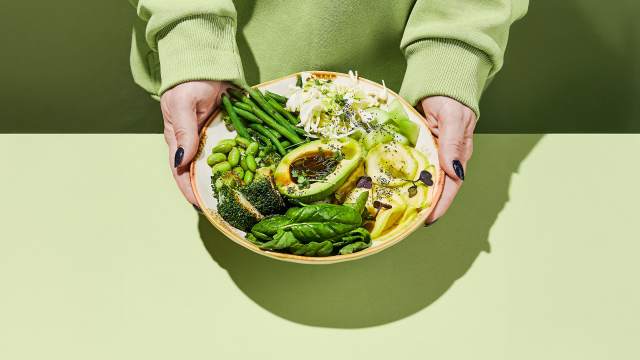What’s on Your Plate: Embrace a Balanced Diet

What is your definition of a healthy meal? For me, a balanced diet is plant-based one — an amalgamation of the flavors and colors of nature on my plate. This bounty is brought together through nutritious recipes from my country of birth, India, and different world cuisines. Some of my favourites are spinach and tofu soup, pan-seared pointed gourd smeared with beetroot sauce, and a bowl of warm tomato-tulsi rasam (a clear and tangy south Indian soup).
Everyone has their own take on what’s healthy. A balanced diet differs for each person, and is often defined by their cultural background, geographical location, and other personal preferences, including ethical leanings. For a large part of the world’s population, diet is simply a function of what they’ve grown up eating and what is easily available. Athletes and others who are focused on building muscle mass usually prefer protein-dense meals includes animal sources of protein. A lot of ecologically and ethically conscious people these days lean towards plant-based and vegan diets.
So how do you choose what’s healthy and what’s not — for yourself? What is this balance that I speak of — is it a balancing act between flavors, nutrients, or portion sizes? Or is it about getting different food groups and colors on your plate?
The best way is to figure this out is by revisiting how you came to appreciate food. What did you eat as a child? What did your mother serve up for dinner? What were you told to avoid eating in excess? You may have moved continents, countries, cities, and discovered new cuisines, but the definition of a balanced diet — nutritious, healthy, and freshly cooked food — is universal. And chances are what was good for you then stands true today, although you might want to factor in ingredients and nutrients relevant to your wellbeing goals and needs. Here are a few pointers I follow to find nutritive balance in my meals:
Shop local
The best way to eat healthy is to eat fresh. If you tap into local produce, you will always get food that is seasonal and fresh. Visit your neighborhood farmers’ markets each weekend. You are guaranteed quality ingredients and can also support the community. The local jams, dips, and sauces you can source will be a plus point, better than additive-laden supermarket buys.
Replace wisely
Moderation is the key to a balanced diet — keep the salt and sugar low, add herbs and spices for flavor, and include healthy fats wherever you can to your food. The idea is not to blindly load up on the healthy stuff, but to make sure it is assimilated well in your diet. Choosing the right oils and making smart substitutions — store-bought vinaigrette with a a squeeze of lime, mayonnaise with Greek yogurt, simple carbs and sugars with complex ones (think sweet potato for rice and jaggery for white sugar), etc. — can help enhance the taste of your meals while meeting your body’s nutritional needs. Instead of dousing your food in oil or deep frying it, choose alternate cooking methods such as steaming, grilling, or sauteing. These small steps of conscious cooking can go a long way in helping you be healthy. The idea is to find a happy middle ground between tasty and healthy food.
Eat mindfully
Avoid distractions while you eat. Notice your food, chew slowly, look at your plate to absorb through your senses the nutritional goodness on offer and be grateful for each meal. Of course, you must keep your phone away, avoid watching television, and rushing through your meal. Take a moment, and your body will be grateful for this pause. The process of digestion begins in the mouth, so chew slowly and you are already helping your body digest better. You should also learn what portion size is ideal for you and notice when when you are satiated so you can stop eating.
To embrace a balanced diet is to be aware of what we are eating and how we are eating it. To live a long, healthy life, we need to prioritize food that is whole, healthy, and responsibly sourced, and learn to appreciate its flavors. The simple acts of bringing consciousness to how we shop for groceries, how we prepare our food, and how we eat, can help us truly balance our diets and be the healthiest versions of ourselves.




